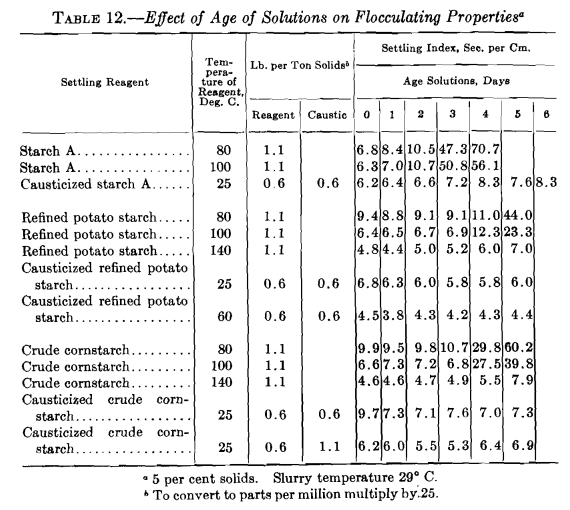- To participate in the 911Metallurgist Forums, be sure to JOIN & LOGIN
- Use Add New Topic to ask a New Question/Discussion about Thickening, Filtering or Tailings and Water.
- OR Select a Topic that Interests you.
- Use Add Reply = to Reply/Participate in a Topic/Discussion (most frequent).
Using Add Reply allows you to Attach Images or PDF files and provide a more complete input. - Use Add Comment = to comment on someone else’s Reply in an already active Topic/Discussion.
Aging of flocculant solution (3 replies and 3 comments)
Hi Tungsten644,
From my experience if the flocculant is properly mixed it needs no further agitation, in fact too much agitation will start to negate the benefits of the floc by breaking down the long molecule chains that make it up.
I am not sure about the aging part as I understood that once mixed it should be used within 3 days or discarded and remade
Hope this helps,
Wayne
Hi Wayne,
Thank you and appreciated much your input.
Do you know any paper that I could use as a reference to further explain to my commissioning colleagues over here about aging of flocculant solution and degrading factors.
Kind regards.
On weird organic flocs, I have a paper that says, that some flocculants are subject to bacterial degradation. Tanks for mixing and storing solutions should have a bottom drain to permit complete use of the solution before more is added.
All flocculant tanks should have a curved bottom with a center drain. No flocculant is completely soluble and solids that settle to the bottom and can eventually work into the system.
These solids can plug lines or interfere with measuring instruments.
Much depends on the environment/temperature you are in.
From a practical point of view, it is extremely important to know how long these flocculating agents will retain their properties. Starch A, prepared by heat-treatment only, deteriorated more rapidly than any other reagent, and after a few days in storage had a dispersing rather than a flocculating action. Other heat-treated starches retained their flocculating properties up to and including three days. Causticized starches retained their flocculating properties for a much longer period of time than did heat-treated starch solutions. Some causticized solutions set for nearly two weeks have shown no appreciable deterioration.
The deterioration of these settling reagents is apparently a form of bacteriological fermentation; hence it is reasonable to assume that the reagents would exhibit the properties mentioned above. Starch A contains dextrinized starch, which is readily attacked by bacteria, and it loses some of the flocculating power overnight. The other starches must undergo preliminary transformations before the bacteriological action becomes apparent, so that deterioration is less rapid. Causticized solutions remain unchanged because the alkali inhibits the action of bacteria.

Flocculation And Clarification Of Slimes With Organic Flocculants
Use the Social Share Bar on the Left. Tell everyone you can about https://www.911metallurgist.com/metallurgy/ It's FREE & GOOD.
Hi David,
Thank you for the data. Thinking outside the box, this would give us other ideas regarding floc solution deterioration.
Cheers.
Typical synthetic flocculants used in mineral processing (acryilc acid derivatives) do not need agitation once inverted (mixed/ dissolved). David's input above is correct, but seems to be based on Starch derivatives which are almost not used anymore (ive only seen it in very old Alumina plants and not anywhere in mining). Wayne is correct in suggesting that over agitation can degrade the polymer chain (through shear forces) hence for a typical ultra high molecular weight anionic polymer (powder form) the make up should be (consult polymer supplier):
- ~2.5gpl make up conc
- Wetting head at correct pressure (~300kPa is a good rule of thumb)
- 30-60 minutes agitation in mix tank
- 2-4 hours of ageing in solution tank (longer is typically better, but capex expense is traded)
- not to be agitated as this is to be as "plug flow" as possible to allow aged material withdrawal
- All polymer flows must be kept <1m/s flow rate and runs should be no longer than 150m if possible (shear history effects, reduces efficiency)
- Secondary dilution with fresh, clean water must be done as late as possible prior to dosing at the thickener.
- only 1x 90 degree bend is required for adequate mixing
- shear force degradation increases as floc concentration decreases
- Dosing points should be relevant to feedwell design (consult thickener OEM)
Cheers,
Dane
Hi Dane,
We are using a Magnofloc product from BASF and in reference to what you have mentioned regarding the length of flow of no more than 150m, ours here is way longer using a positive displacement mono pump.
Thank you for some enlightenment.
Cheers.

Is it necessary to have the flocculant solution continuously being agitated while Aging or transferring it in a holding tank would do?